Our editors independently select these products. Making a purchase through our links may earn Well+Good a commission
Feel Like You Just Can’t Relax? These 5 Stress-Relief Wearables Are Scientifically Designed To Help
Wearable stress-relief devices use vibration, sound, thermal therapy, and more to help move your body and mind to a calmer state.

As it arises, stress or anxiousness can feel like a whirling vortex, leaving you somehow tense and fatigued all at once, brain unable to focus. But, in scientific terms, the impact of stress on the body is actually pretty quantifiable: It comes from a cascade of hormones like adrenaline and cortisol that create changes in your brain waves, heart rate, and respiration known as the “fight or flight” response. That quantifiable property is largely what’s led to a rise in wearables that track stress through physical markers, which is now paving the way for an even newer set of wearable devices designed not only to measure stress, but also to provide relief from it.
Experts in This Article
occupational therapist with the National Council on Aging
board-certified psychiatrist, neuroscientist, entrepreneur, and inventor, and co-founder &
Stefan Chmelik is the founder of BioSelf Technology, a technology startup creating wellbeing-enhancing wearable technology, and the inventor of Sensate, a stress-relief device.
That’s right, certain wearable stress-relief devices (that you can place on your wrist, around your forehead or even on your chest) purport to pinpoint stress as it’s happening and then provide a physical intervention, like a certain sound or vibration, to help reduce the negative effects in the moment. The idea? Given what we know about the very real impact of stress on the nervous system, it may be possible to interrupt that mind-body feedback loop through physical means, just like you would mental ones (like, say, mindfulness exercises or meditation).
How do wearable stress-relief devices work?
One of the main ways that relaxation-focused wearables are working to circumvent the stress response is through some version of low-frequency sound or infrasound, which has a frequency that’s typically barely audible (under 20 hertz) and is felt in the form of vibration. “These low-frequency vibrations are good for stress management, since they encourage relaxation,” says occupational therapist Brittany Ferri, PhD, referencing research on the power of binaural beats (aka two-tone sounds) in these lower frequencies to induce calming theta waves in the brain.
It’s also possible that these vibrations could help stimulate the vagus nerve, which, in turn, signals the parasympathetic (aka “rest and digest”) nervous-system response that counteracts stress. Co-founder and chief innovation officer of Apollo Neuro, which makes a wearable that uses this vibration technology, David Rabin, MD, PhD, likens those vibrations to the effect of soothing music—but, of course, without the potential distraction of the music itself: “Apollo brings the benefits of music to the body through the skin in a way that doesn’t require our ears to provide the same balancing effects.”
A similar device, Sensate, which is a palm-sized “pebble” that you place on your chest, takes that idea a step further, resonating the low-frequency vibrations through your body by way of bone conduction, according to Sensate’s inventor Stefan Chmelik. Though research on how different kinds of vibration impact the body is still emerging, the gentle rumble of Sensate could be compared to the chest-vibrating effect of chanting “om” for an extended period of time, which has been shown to activate the vagus nerve and promote calm.
A number of other wearable devices for stress relief tap into different variations of sounds and vibrations, as well as thermal therapy, all of which can “serve as helpful adjuncts to any other stress-relief practice,” says Ferri. In other words, these devices aren’t quick-fix solutions for stress so much as methods that can help shift your mind to a space where it’s more effectively able to relax. Use them alongside other stress-busters (like tension-releasing facial massage techniques, calming yoga flows, or fidget toys for adults) to help lower your cortisol levels in record time.
Below, you’ll find a breakdown of the best wearable stress-relief devices on the market, along with the science behind how they’re designed to work.
5 of the best stress-relief wearables to shop for maximum calm
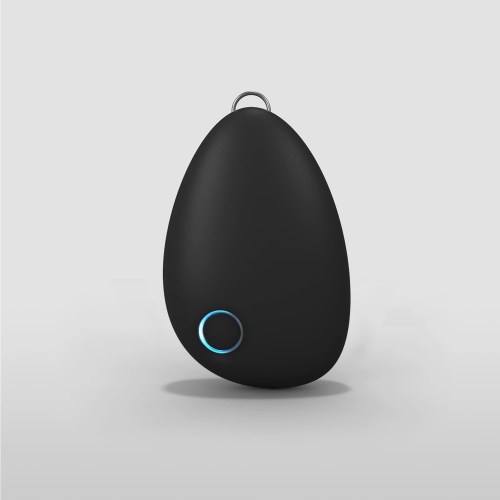
Sensate 2 — $249.00
As noted above, Sensate 2 resembles a palm-sized stone (like one you’d skip on a stream). To use it, you place it on your chest, near your sternum, where it emits inaudible low-frequency sounds that create a gentle vibration. If you’re wondering how it doesn’t slip out of place, know that it comes with a lanyard to keep it on, and you’re generally meant to be reclining while it works. These vibrations sync up with soundscapes, or mixed-frequency musical tones, by way of a phone app (you listen using headphones while the pebble is at work), where you can adjust the volume of the sounds and intensity of the vibrations.
This sensory one-two punch has the satisfying effect of hitting the off switch on your mind. The tingly buzz and the melodic tones make it easy to enter a kind of dreamy state—which I found particularly welcome when I tried it, given how much work it usually takes me to stop my racing thoughts during a meditation.
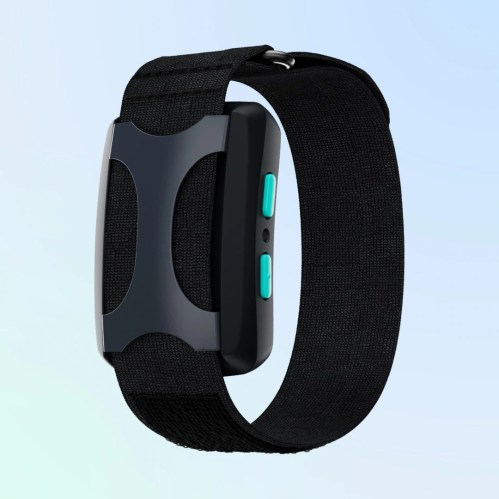
Apollo — $349.00
While it has a similar vibrational mode of action to Sensate, Apollo takes a different tack in terms of its usage; it’s not meant to be used just during meditation or while you’re relaxing, but instead, throughout the day. You strap it onto your wrist or ankle (with the vibrational piece on the inside of either, for maximum effect), and then sync it to an app, from which you choose one of seven modes, which range from “Sleep and Renew” to “Energy and Wake Up.”
The idea is that, at any point, the gentle, wave-like vibrations can help optimize your nervous-system response for the situation at hand. “All Apollo vibrations remind us that we are not actually under threat by balancing sympathetic and parasympathetic activity through our sense of touch,” says Dr. Rabin. (The company conducted an in-house study that shows this effect by way of increased heart-rate variability—a marker of a healthy stress response—though it hasn’t been peer-reviewed yet.)
As you might suspect, the vibrations for the more restful modes contain slow-moving frequencies, while the ones for the more upbeat modes reflect higher frequencies and quicker, rolling pulsations. But for all of them, you’re able to adjust the mode intensity with a slider on the app. Because everyone responds a little differently, it’s recommended to start using Apollo at a lower intensity (in any of the modes) and then shift it up a bit, once you’re comfortable with the sensation.
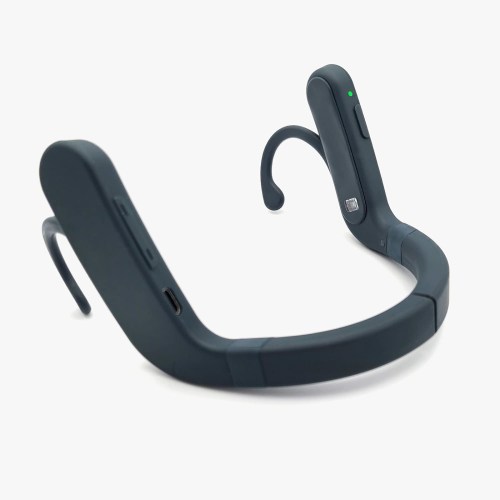
Cove — $379.00
Forget wrists, ankles, and chests, for a second, and instead imagine the soothing vibrational cues of the above wearables happening in your head. Yep, Cove is a device that wraps around the back of your head and emits a soundless vibration designed to stimulate the brain’s insular cortex, which is the region that processes “affective touch” (aka the stress-dissolving touch of a gentle hug).
Like the Apollo, it’s meant to be worn as you go about your regular activities (this time, for 20-minute intervals, twice a day)—even if it does look a little funky in action. To use it, you’ll need to link the app, which allows you to monitor heart-rate data from sessions, as well as purchase a subscription; $379 gets you a year, but you can also choose to pay $199 upfront and $29 per month (for six months) or $99 upfront and $19 per month (for 18 months).
Rather than instantly calm you down or temper how you feel, Cove is designed to change your response to stress over time. And through an internal study of about 700 people spanning two years, the company found evidence of this benefit, in terms of stronger connections between the insular cortex and regions of the brain that process emotion. Even so, the vibrations emitted from the device itself are very gentle, almost imperceptible at times, according to one writer, who tried it out for a couple weeks. The takeaway? Its effects are subtle and incremental, tapping into your unconscious sensibility of rest and calm.
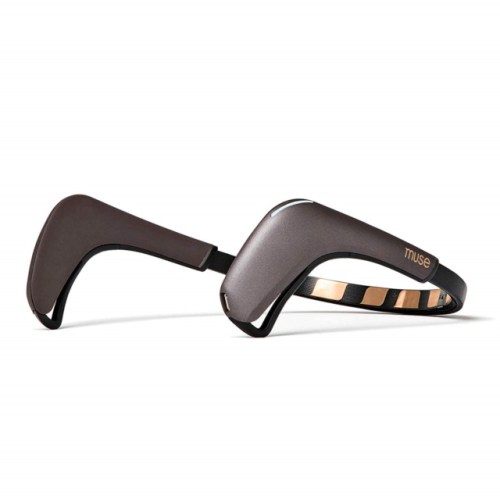
Muse 2 — $250.00
If you’ve ever felt like you’re not meditating correctly, or you can’t seem to calm your mind down to the point where you can really relax, the Muse 2 is for you. Unlike the above stress-relief wearables, this one works with you by using electroencephalography or EEG sensors (that measure electrical activity in your brain) to track your brain waves, along with additional sensors like a heart-rate monitor, a gyroscope (to track your breath) and an accelerometer (to track your posture).
Essentially, you choose a guided melodic meditation focused on balancing any one of the above metrics and can ensure you’re getting the beneficial effect through the device’s real-time feedback. For example, with the mind-focused meditation, you’re prompted to choose a natural soundscape (rainforest, beach, city park, desert, or ambient), and as the meditation goes on, the device will translate your brain waves into sounds of weather in that environment. If it picks up active (aka distracted) brain waves? You’ll hear a storm a-brewing. But so long as your brain waves stay in the calm zone, you’ll be rewarded with the sounds of peaceful weather.
ThirdLove Just Launched Bras That Help Balance Your Body Temperature—Here’s Why That’s a Game-Changer for Women in All Life Stages

These Are the Only Types of Underwear You Should Be Wearing, According to Gynecologists

These Are the Summer Essentials You Should Bring With You Every Time You Leave the House, According to a Derm and an RD

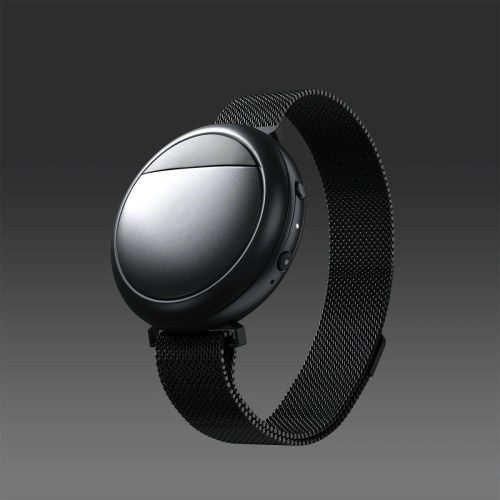
Embr Wave 2 — $299.00
Originally designed to provide relief from hot flashes in menopausal folks, the Embr Wave 2 releases a burst of coolness onto the temperature-sensitive skin of the inner wrist at the touch of a button. But its benefits don’t stop there; if you’ve ever felt the rush of heat or sweat that can come along with a stressful or anxious moment, you know how relieving a cooling sensation could be in that context, too.
Not to mention, simply being in a space that feels too cold or too hot could create discomfort that’s distracting or stressful—and the Embr Wave 2 allows you to choose from different cooling or warming sensations depending on whatever you need to get you back to your baseline comfort level. In the connected app, you can set the precise temperature of your session (on a sliding scale) and choose a duration from 5 minutes to 9 hours; it also tracks the sessions, so you can get a better idea of when your mind and body work best at which temperature.
Sign up for the Well+Good SHOP Newsletter
Get exclusive deals on wellness, beauty, fitness, and food products that have been hand-picked by our editors.
Got it, you've been added to our email list.







